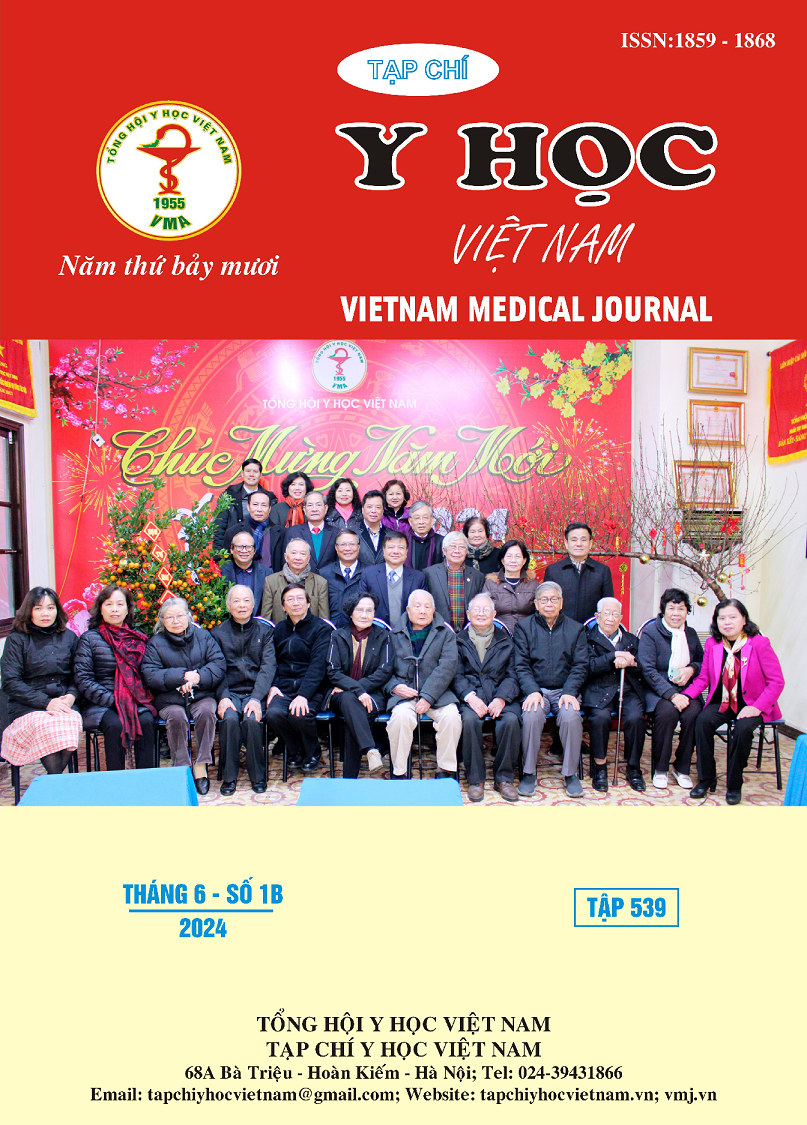THE EFFICACY OF NEBULIZED BUDESONIDE IN TREATING MODERATE ACUTE ASTHMA EXACERBATIONS IN CHILDREN: A SINGLE-CENTER, RANDOMIZED CONTROLLED TRIAL
Main Article Content
Abstract
Objectives: To evaluate the efficacy of inhaled budesonide in the treatment of moderate acute asthma exacerbations in children aged 6-15 years. Materials and methods: Patients aged 6-15 years diagnosed with moderate acute asthma exacerbations were treated in the Emergency Department of Can Tho Children's Hospital from June 2024 to December 2024. Results: The average age of the study subjects was 8.95 ± 2.27, with a male/female ratio of approximately 2.3/1. Common symptoms of bronchial asthma included cough (97.6%), wheezing (97.6%), shortness of breath (98.8%), accessory respiratory muscle use (93.3%), and rales or rhonchi (98.8%). Regarding treatment efficacy, the experimental group (with nebulized budesonide) showed significantly higher rates of functional symptom improvement compared to the control group (with oral corticoid) at time points T1 and T2 (p < 0.05), and the rate of improvement in physical symptoms at time point T1 was also higher in the experimental group compared to the control group (p = 0.027). At time points T1 and T2, the PAS score significantly decreased with statistical significance (p < 0.001) in the study group compared to the control group (7.2 ± 0.84 vs. 8.24 ± 0.94 and 6.41 ± 1.02 vs. 5.95 ± 1). Most subjects were treated successfully, however, there was no difference in treatment outcomes between the two groups (95.1% and 87.8%). The majority of patients did not require rehospitalization within 48 hours (95.1%), with no difference between the groups. The average length of stay in the emergency department for the experimental and control groups was 4.73 ± 1.53 hours and 5.51 ± 1.8 hours, respectively (p = 0.037). Conclusion: A treatment regimen including budesonide helps to improve early clinical symptoms, while also reducing hospitalization time in children with moderate acute asthma exacerbations treated in the emergency department.
Article Details
Keywords
Moderate acute asthma exacerbation, Emergency Department, budesonide.
References
2. Lê Thị Hồng Hanh. Nghiên cứu đặc điểm lâm sàng, cận lâm sàng và vai trò nhiễm virus hô hấp trong đợt bùng phát hen phế quản ở trẻ em. Luận án Tiến sĩ. Học viện quân y. 2011.
3. Đỗ Thị Thái, Bùi Bỉnh Bảo Sơn. Nghiên cứu đặc điểm lâm sàng, cận lâm sàng và chức năng hô hấp trong hen phế quản ở trẻ trên 5 tuổi. Tạp chí Y học Lâm sàng. 2019;109:59-65.
4. Bùi Kim Thuận. nghiên cứu đặc điểm lâm sàng, cận lâm sàng và hiệu quả kiểm soát hen ở trẻ dưới 5 tuổi theo các dạng phenotype. Luận án Tiến sĩ. Trường Đại học Y Dược Hải Phòng. 2018.
5. Trần Thị Minh Trang. Đánh giá hiệu quả của budesonide khí dung trong phối hợp điều trị cơn hen cấp ở trẻ em tại bệnh viện Nhi Trung Ương. Luận văn Thạc sĩ. Đại học Y Hà Nội. 2019.
6. Al-Musawi ZM, Hussein AM, Hameed RM. Effects of nebulized budesonide plus salbutamol and nebulized salbutamol monotherapy on mild to moderate acute exacerbation of asthma in children: A comparative study. J Pak Med Assoc. 2021; 71(Suppl 9)(12):S29-S34.
7. Devidayal, Singhi S, Kumar L, Jayshree M. Efficacy of nebulized budesonide compared to oral prednisolone in acute bronchial asthma. Acta Paediatr. 1999; 88(8):835-840.
8. Global Initiative for Asthma. Global Strategy for Asthma Management and Prevention (2022 update). 2022. Cited 2024 April. Available from: www.ginasthma.org.
9. Sharma S., Harish R., Dutt N., Digra K.K. To evaluate the efficacy of nebulized budesonide compared to oral prednisolone in the management of moderate exacerbation of acute asthma. Int J Contemp Pediatr. 2017;4(4): 1278-1283.
10. Vos T., Lim S.S., Abbafati C., et al. Global burden of 369 diseases and injuries in 204 countries and territories, 1990–2019: a systematic analysis for the Global Burden of Disease Study 2019. The lancet. 2020; 396(10258):1204-1222.


